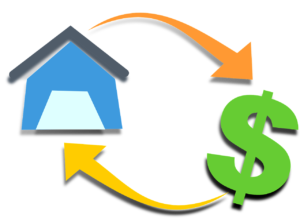 The cost of lending is increasing even as productivity and borrower share continues to decline, according to the results of Mortgage Cadence's [1] 2019 Lending Performance Benchmarking Study [2]. The annual survey examines five performance indicators—velocity, borrower share, pull-through, productivity, and cost-to-close. Here are the five key results and what they mean for lenders:
The cost of lending is increasing even as productivity and borrower share continues to decline, according to the results of Mortgage Cadence's [1] 2019 Lending Performance Benchmarking Study [2]. The annual survey examines five performance indicators—velocity, borrower share, pull-through, productivity, and cost-to-close. Here are the five key results and what they mean for lenders:
A Lengthening Process
The survey revealed that housing supply challenges were to blame for an increase in lending velocity (the number of days it takes to pre-approve a loan). Loan velocity in 2018 was 64.53 days, a marked increase from 2017's 56.29 days. The survey reasoned that as demand outstripped supply in the housing market, the preapproval process lengthened. "The best performing lender in the 2019 study bucked this trend, closing loans, on average, in 32.5 days in 2018," the survey revealed.
Closings Decline
Again, the challenges of finding a home were to blame for a slight dip in closings during the year. The survey found that lender pull-through (closing a mortgage application) fell from 50.08% in 2017 to 48.21% in 2018. However, the closings were higher than in 2012 when only 43.48% of applications made it through to the closing table.
Additionally, the survey said that this was a critically important metric for lenders since a small increase in closing could result in "a dramatic impact on cost-to-close."
Falling Borrower Share
The survey found that borrower share, which has been a continuous challenge for lenders continued its decline in 2018. It revealed that borrower share fell again, albeit slightly, to 0.85% in 2018. In 2017, borrower share fell to 0.86%. Despite these declines, the survey said that lenders should look at it as an opening. The opportunity, the survey pointed out, lay in customers who already enjoyed a positive experience with the lender would be "much easier to market to than acquiring an entirely new customer.
The survey revealed that its top-performing lender had capitalized on this opportunity by working with 3.29% of its previous customers in 2018.
Productivity Is Declining
Falling productivity directly impacts a lender's productivity. The survey revealed that productivity had fallen from 5.36 loans per full-time employee working in the mortgage department in 2012 to 3.31 loans in 2017. However, a closer look revealed that productivity had seen a maximum decline between 2012 and 2014. But since then, "lenders have been slowly improving this metric," the survey found.
Cost-to-Close Is Increasing
In 2018, it cost lenders $5,643 to close a loan, more than double the $2,776 they were spending in 2012, the survey revealed. However, many lenders were still able to keep an eye on streamlining their costs. The lowest cost-to-close reported in the study was $1,043 per loan.
The study also made some recommendations for lenders to improve their bottom line based on these findings. They included:
- Benchmarking performance against the competition
- Taking a closer look at the current staffing model
- Streamlining processes
- Trimming back on additional tech by doing more with the technology already owned by the lenders
- Focusing more on borrower experience